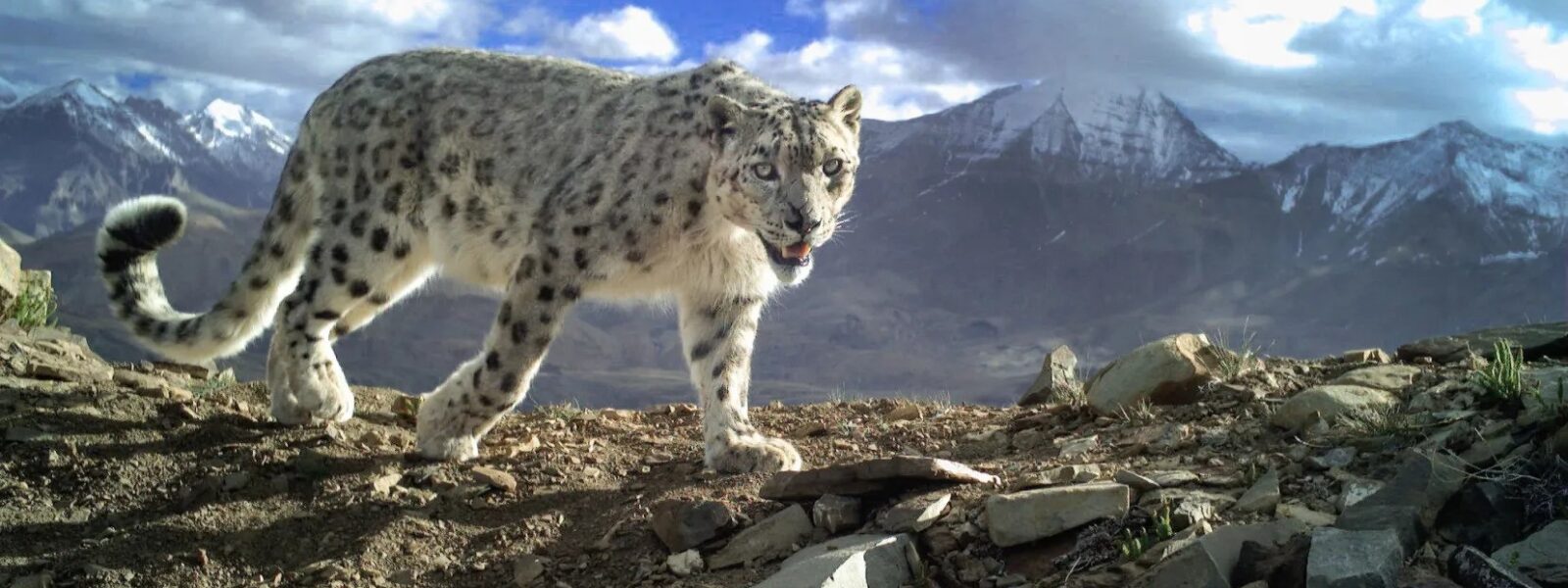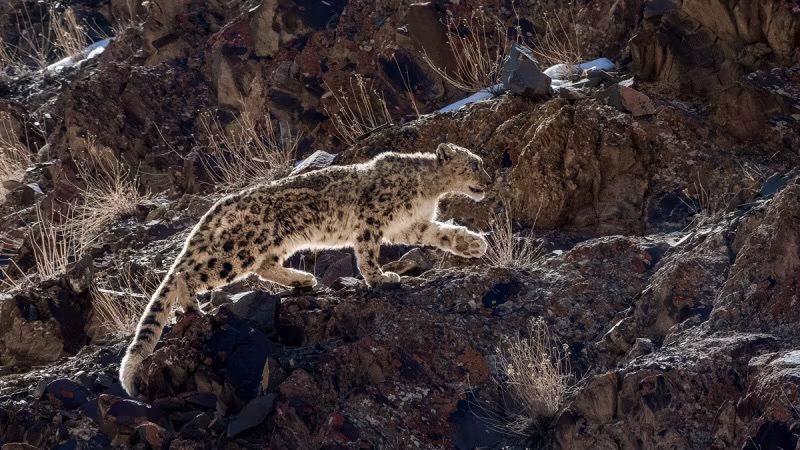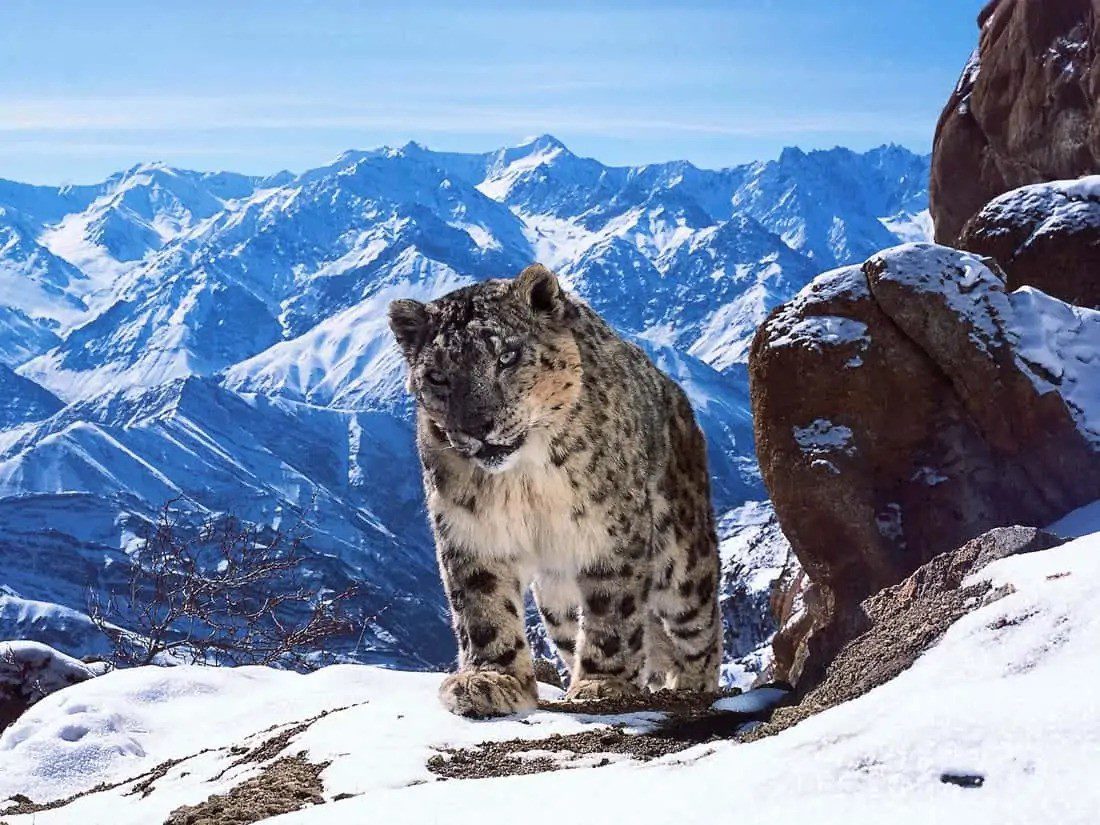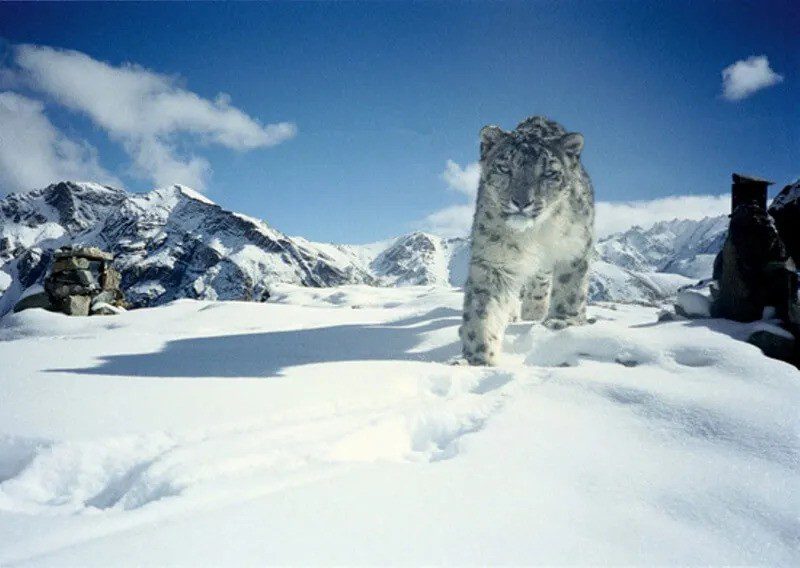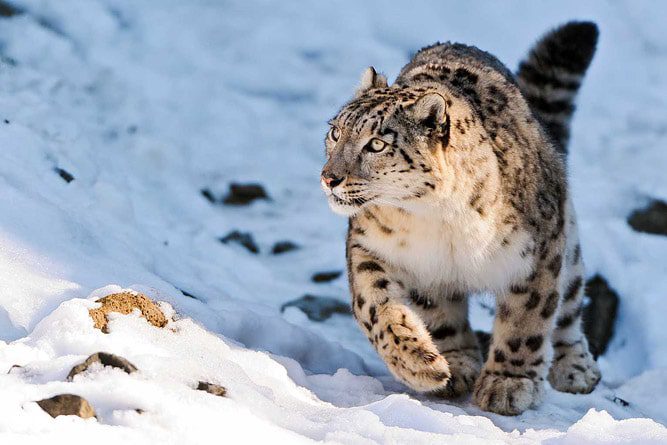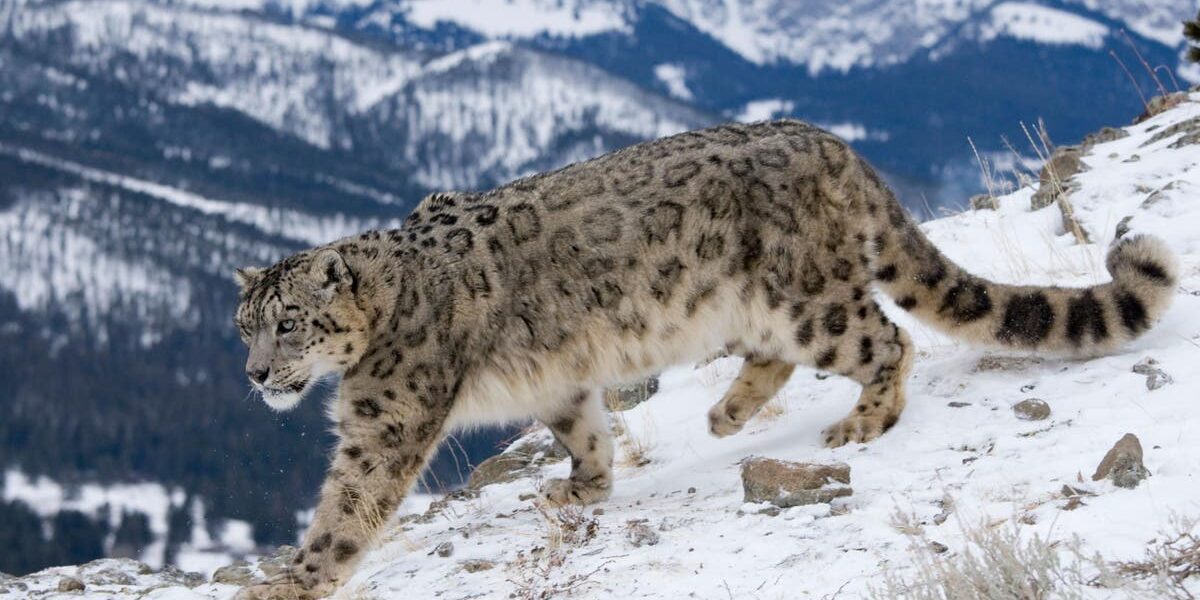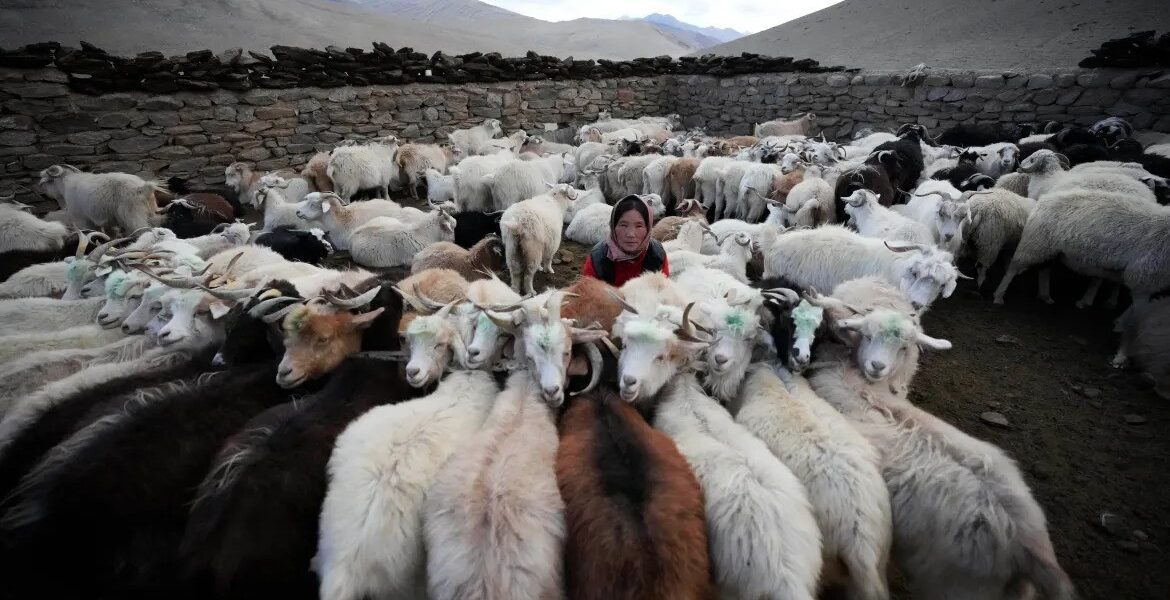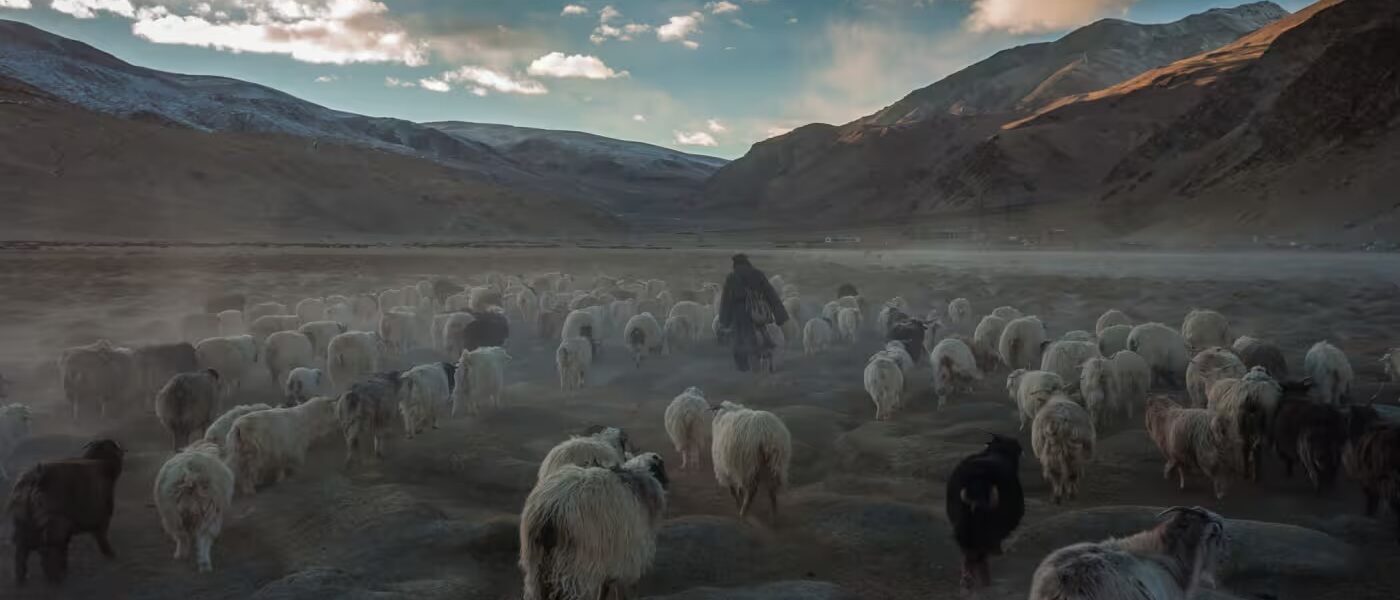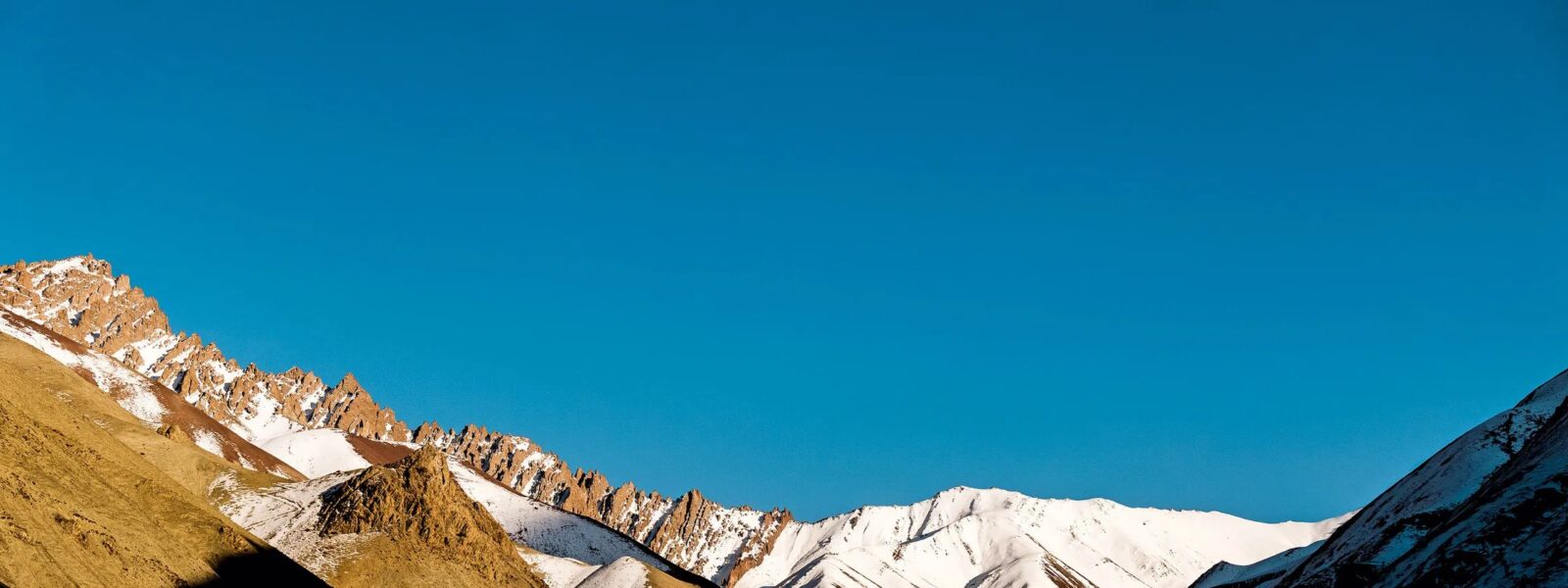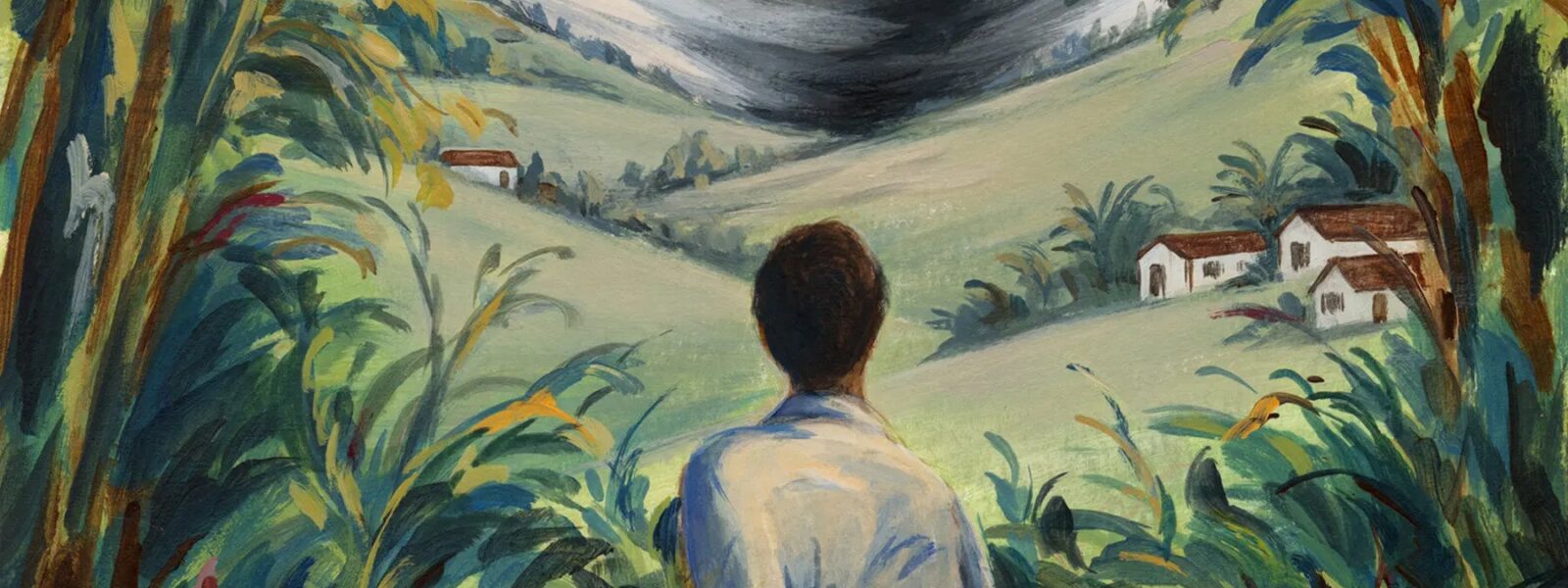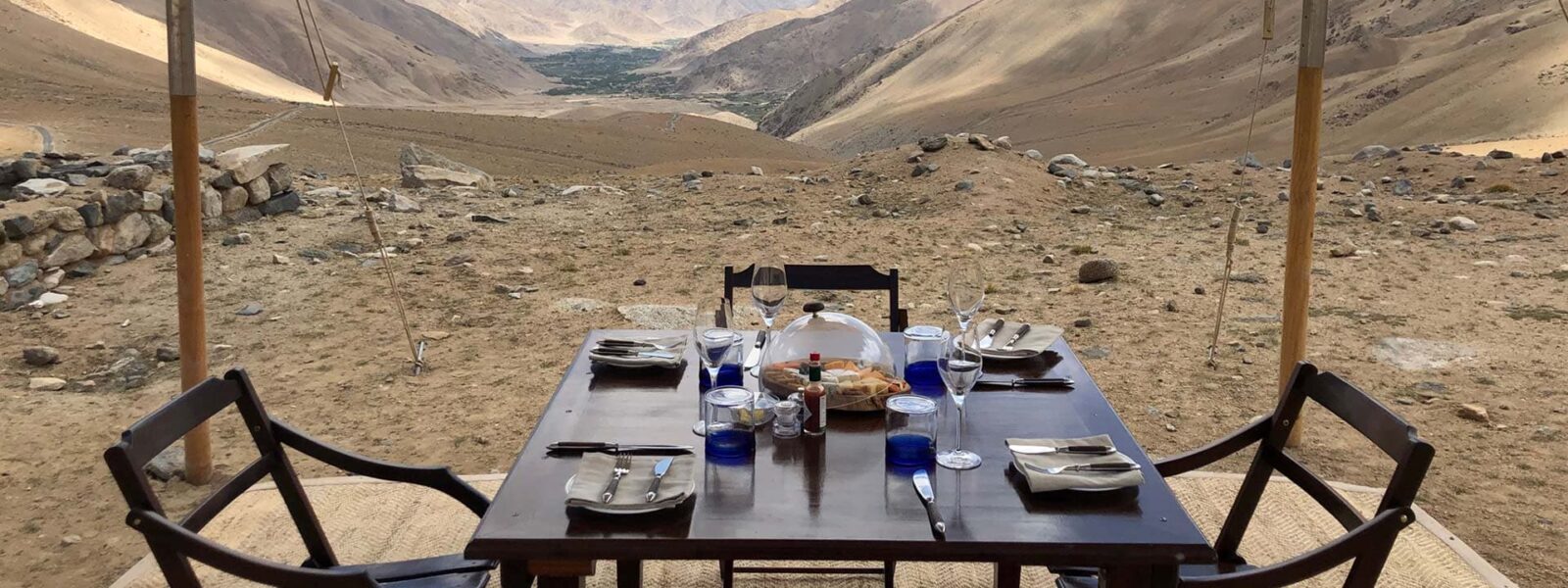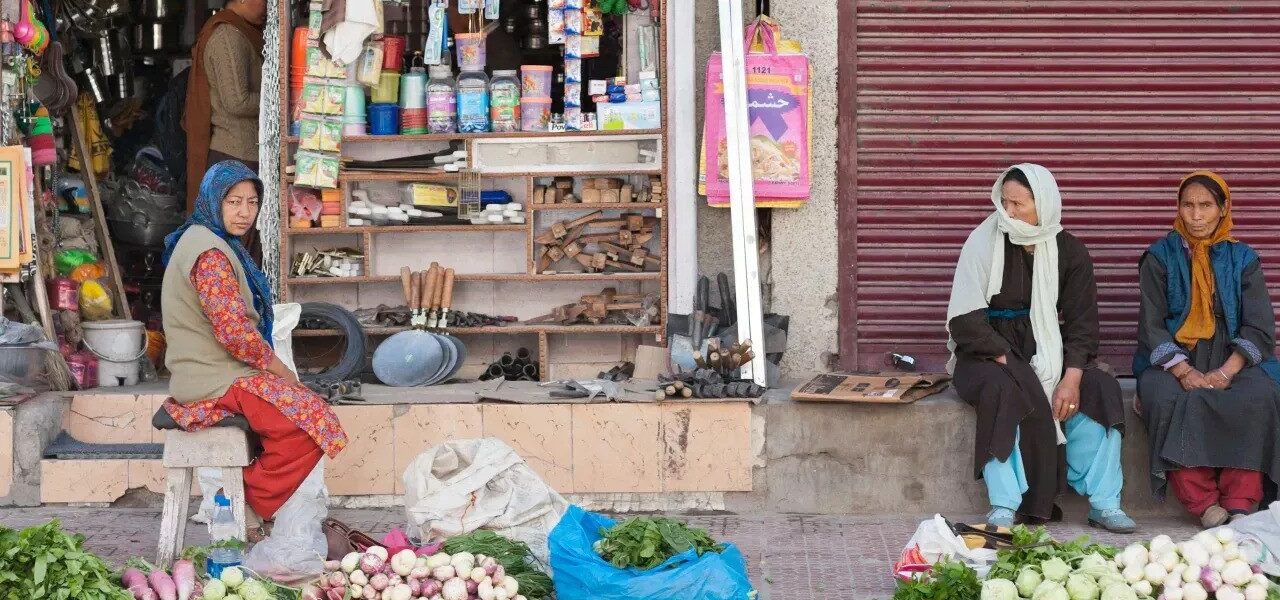Table of Contents
- Why Ladakh is a Haven for Wildlife Enthusiasts
- Introduction to the Snow Leopard Trail
- Best Time to Visit Ladakh for Snow Leopard Tracking
- Top Locations in Ladakh to Spot Snow Leopards
- What to Expect on a Snow Leopard Trek
- Eco-tourism and Snow Leopard Conservation in Ladakh
- Preparing for the High Pass Adventure
- Other Unique Wildlife to Spot in Ladakh’s High Passes
- How Local Guides Enhance Your Experience
- Tips for Wildlife Photography in Ladakh
- Cultural Experiences Alongside Wildlife Trekking
- Sustainable Tourism Practices for Ladakh’s Wildlife
- FAQs About Snow Leopard Trekking in Ladakh
- Conclusion and Call to Action
Why Ladakh is a Haven for Wildlife Enthusiasts
Ladakh, nestled in the Indian Himalayas, is a sanctuary for wildlife lovers and adventure enthusiasts alike. Its rugged, high-altitude terrain is home to some of the most unique and elusive species, including the majestic snow leopard, Himalayan ibex, Tibetan wolf, and golden eagle. The stark beauty of its ecosystem, with snow-capped mountains and pristine valleys, adds to its allure.
Wildlife enthusiasts visiting Ladakh can witness a harmonious balance of biodiversity that thrives in one of the harshest climates on Earth. Hemis National Park, for example, is renowned worldwide for its role in snow leopard conservation, making Ladakh an essential destination for anyone passionate about nature and wildlife.

Introduction to the Snow Leopard Trail
The allure of snow leopards in the Indian Himalayas
Known as the “Ghost of the Mountains,” the snow leopard is one of the most elusive big cats in the world. Found primarily in the high-altitude regions of Ladakh, these magnificent predators are symbols of strength, resilience, and the wilderness.
Efforts to conserve the snow leopard have brought attention to Ladakh as a premier destination for eco-tourism. Visitors embarking on the Snow Leopard Trail gain a rare opportunity to witness these enigmatic creatures while contributing to their preservation.
High passes: A trekker’s dream
Ladakh’s high passes not only provide stunning landscapes but also serve as gateways to snow leopard habitats. The challenging terrain offers a thrilling experience for trekkers, with trails winding through remote valleys and towering peaks.
Best Time to Visit Ladakh for Snow Leopard Tracking
Winter months and snow leopard sightings
Winter, from November to March, is the best time to spot snow leopards in Ladakh. During this period, the cats descend to lower altitudes in search of prey, increasing the chances of sightings. Additionally, the snow-covered landscapes create an ethereal backdrop for wildlife enthusiasts and photographers alike.
Seasonal advantages for wildlife enthusiasts
The winter season offers not just snow leopard sightings but also opportunities to observe other high-altitude species like blue sheep and Tibetan wolves. While the cold temperatures and altitude pose challenges, the rewards are unparalleled for nature lovers.
Top Locations in Ladakh to Spot Snow Leopards
Hemis National Park: The snow leopard capital
Hemis National Park, often referred to as the snow leopard capital of the world, is a must-visit destination for wildlife enthusiasts. The park’s expansive terrain, including Rumbak Valley, offers one of the highest probabilities of spotting snow leopards in their natural habitat.
Other notable areas for snow leopard tracking
Beyond Hemis, regions like Markha Valley and Ulley Valley are also prime locations for snow leopard tracking. These areas provide both accessibility and stunning landscapes, enhancing the overall experience for trekkers.

What to Expect on a Snow Leopard Trek
Trekking routes and wildlife encounters
Most snow leopard treks follow established routes that pass through key wildlife corridors. Trekkers can expect to encounter not only snow leopards but also other species like Himalayan ibex and golden eagles.
Guided expeditions: A glimpse into eco-tourism
Guided treks are led by local experts who are familiar with the terrain and animal behaviors. Their knowledge enhances the trekking experience while promoting sustainable tourism practices that support conservation.
Eco-tourism and Snow Leopard Conservation in Ladakh
The importance of eco-tourism in preserving Ladakh’s wildlife
Eco-tourism plays a pivotal role in funding conservation efforts and supporting local communities. By participating in snow leopard treks, visitors contribute directly to initiatives aimed at protecting these majestic animals and their habitats.
Community involvement in snow leopard preservation
Local communities in Ladakh actively participate in snow leopard conservation through initiatives like the Snow Leopard Conservancy. These programs create employment opportunities while fostering a sense of ownership and responsibility among residents.
Preparing for the High Pass Adventure
Physical fitness and acclimatization
Trekking in Ladakh’s high-altitude regions requires physical fitness and proper acclimatization. Trekkers should allow time to adjust to the altitude to avoid altitude sickness and ensure a safe and enjoyable experience.
Packing essentials for a winter trek
Essential items include warm clothing, waterproof gear, sturdy boots, and trekking poles. Binoculars and a good camera are also recommended for wildlife spotting and photography.

Other Unique Wildlife to Spot in Ladakh’s High Passes
The Himalayan ecosystem beyond snow leopards
Ladakh’s biodiversity extends beyond snow leopards. Visitors may encounter Tibetan gazelles, Himalayan marmots, and lammergeiers, among other fascinating species.
Biodiversity hotspots in Ladakh
Areas like Changthang Wildlife Sanctuary are teeming with rare and endangered species, making them ideal for wildlife enthusiasts.
How Local Guides Enhance Your Experience
Expertise in snow leopard tracking
Local guides possess an intimate knowledge of the terrain and animal behaviors, significantly improving the chances of spotting snow leopards during a trek.
Supporting local communities through guided tours
By hiring local guides, visitors contribute to Ladakh’s economy while gaining authentic insights into its culture and wildlife.
Tips for Wildlife Photography in Ladakh
Capturing snow leopards and other wildlife
Photographers should use telephoto lenses to capture distant wildlife. Patience and a keen eye are essential for capturing the perfect shot.
Overcoming challenges of high-altitude photography
Cold weather can affect camera equipment. Keeping batteries warm and protecting lenses from moisture are crucial for successful photography in Ladakh.

Cultural Experiences Alongside Wildlife Trekking
Immersing in Ladakhi culture
Wildlife treks often include visits to monasteries and interactions with local communities, offering a unique cultural experience alongside the adventure.
Combining adventure with cultural exploration
Traditional Ladakhi festivals and practices observed during winter treks add a rich cultural dimension to the wildlife experience.
Sustainable Tourism Practices for Ladakh’s Wildlife
Minimizing the impact of tourism
Visitors should adopt responsible practices such as minimizing waste, respecting wildlife, and supporting eco-friendly initiatives to preserve Ladakh’s pristine environment.
Promoting eco-friendly initiatives
Efforts like the Snow Leopard Conservancy and community-based tourism help balance ecological preservation with tourism growth.

FAQs About Snow Leopard Trekking in Ladakh
- What is the best season for snow leopard trekking in Ladakh?
Winter (November to March) offers the best chances for sightings.
- What should I pack for a snow leopard trek?
Warm clothing, waterproof gear, sturdy boots, binoculars, and a good camera are essential.
- Are snow leopard sightings guaranteed?
While sightings are not guaranteed, expert guides and proper planning improve the chances.
- How difficult are the trekking routes in Ladakh?
Most routes are moderately challenging, requiring physical fitness and acclimatization.
- Can beginners join a snow leopard trekking expedition?
Yes, but they should prepare adequately and choose guided tours suited to their fitness level.
Conclusion and Call to Action
Embarking on the Snow Leopard Trail in Ladakh is a once-in-a-lifetime experience that combines adventure, wildlife, and cultural exploration. By choosing eco-tourism and supporting local initiatives, visitors can contribute to the preservation of Ladakh’s unique biodiversity.
Plan your trek today and witness the mesmerizing beauty of snow leopards in their natural habitat. Support conservation efforts and make memories that will last a lifetime.
“Tracking snow leopards in Ladakh was a dream come true. The breathtaking landscapes, incredible wildlife, and the expertise of our local guide made it unforgettable.” – John Smith, Wildlife Photographer, USA
Snow Leopard Trail
Snow Leopard Trail | The journey through Ladakh mirrors the very essence of unraveling unknown horizons, as its dramatic landscapes and unique cultural identity awaken the deepest sense of wonder and exploration. Snow Leopard Trail delves into this realm where inner peace intertwines with the wild, untouched beauty of Ladakh. From the snow-capped peaks to the serene monasteries, every step in Ladakh is a step toward self-discovery. The mountains, ancient paths, and unspoken mysteries stretch before travelers, offering a meditative experience where each encounter feels both effortless and transformative. Whether it’s trekking across remote valleys or sitting quietly beside a sacred lake, Ladakh invites those who seek a deeper connection to the natural and spiritual world.

Snow Leopard Trail
The monasteries of Ladakh stand as living monuments to the region’s profound spiritual heritage. With origins dating back over a thousand years, these ancient structures are both places of worship and repositories of art, culture, and wisdom. Hemis Monastery, one of the largest in Ladakh, is renowned for its annual festival, featuring colorful mask dances performed by monks. The history of these monasteries reflects Ladakh’s role as a crossroads between India, Tibet, and Central Asia, where religious and cultural influences have intertwined over the centuries.
The Tibetan Buddhist influence is especially evident in the architecture and daily life of the monks. Prayer wheels, intricate murals, and the soft hum of chants fill the air as visitors explore the monastery grounds. Each monastery, from the remote Lamayuru to the awe-inspiring Thiksey, offers a window into the spiritual heart of Ladakh. These centers of meditation, learning, and community life continue to thrive, preserving traditions that have shaped Ladakh for generations.
Snow Leopard Trail for Snow Leopard Trail?
Ladakh is a destination that transcends mere travel. It offers a journey that touches both the outer and inner landscapes, making it a perfect setting for those who seek to unravel their own unknown horizons. The region’s breathtaking scenery—from towering mountain ranges to hidden valleys—provides not just an escape but a space for contemplation and growth. Ladakh’s culture, deeply rooted in Buddhist practices, invites visitors to reflect on their own lives and the world around them.
Ladakh’s people, known for their warmth and hospitality, add to the richness of the experience. Villages like Sumda Chun and the legendary Nubra Valley introduce travelers to a way of life that is intricately connected to nature and spirituality. Staying in local homestays allows for immersive experiences where one can learn about traditional Ladakhi customs, share meals made from local produce, and participate in community rituals.

Beyond its natural beauty, Ladakh offers a unique opportunity to explore oneself. The vastness of the region’s plateaus and the clarity of its skies seem to mirror the vastness of the human spirit. Whether it’s standing atop a mountain pass at 18,000 feet or meditating in a centuries-old monastery, Ladakh helps unravel the unknown horizons within each traveler.
Finding the Best Snow Leopard Trail in Ladakh
Finding the best places in Ladakh to experience “Snow Leopard Trail” involves venturing off the beaten path. Ladakh’s lesser-known treks, such as those leading to secluded monasteries or high-altitude lakes, offer unparalleled opportunities for solitude and reflection. The Markha Valley trek, for instance, takes travelers through verdant valleys, ancient villages, and high-altitude passes, allowing for both physical and spiritual exploration.
Ladakh’s iconic lakes, including Pangong Tso and Tso Moriri, are ideal spots for quiet contemplation. Their still waters reflect the sky, creating a mesmerizing landscape that feels timeless and infinite. Sitting beside these lakes, especially at dawn or dusk, brings an overwhelming sense of peace and connection with nature.

For those interested in Ladakh’s spiritual heritage, exploring monasteries such as Alchi, Phyang, or Diskit can be a transformative experience. These sites are not just places of worship but also centers of art, philosophy, and wisdom. Visiting these monasteries, with their ancient murals and intricate statues, offers insight into Ladakh’s rich cultural tapestry.
Ladakh’s Atmosphere and Snow Leopard Trail
Ladakh’s atmosphere is unlike any other place on Earth. The stark contrasts between the rugged mountains and the serene, tranquil monasteries create an environment that feels both raw and sacred. The traditional decor in Ladakhi homes and religious sites reflects this balance, with mud-brick houses adorned with prayer flags and colorful thangkas (Buddhist paintings) that add warmth and spiritual meaning to the space.

The interiors of Ladakhi homes, often simple and functional, are filled with symbols of devotion. Small shrines dedicated to Buddhist deities are common, and the air is often fragrant with incense. The use of earthy materials, like stone and wood, along with brightly colored textiles, creates an inviting and peaceful space, perfect for relaxation and reflection.
Traditional Snow Leopard Trail
Traditional Snow Leopard Trail is an integral part of the region’s identity, offering a unique blend of flavors that reflect its harsh climate and remote location. Hearty, warming dishes such as thukpa (noodle soup) and momos (dumplings) provide the sustenance needed to endure Ladakh’s cold temperatures. Skyu, a thick stew made with root vegetables and barley, is another staple of the Ladakhi diet, designed to nourish both body and spirit.

Drinks like butter tea, made with yak butter and salt, are a must-try for anyone visiting Ladakh. This rich, savory drink is not only warming but also hydrating, making it essential for those venturing into the high-altitude regions of Ladakh. Chang, a local barley beer, is often enjoyed during festivals and community gatherings, adding a sense of joy and camaraderie to any occasion.
Live Cultural Snow Leopard Trail in Ladakh
Ladakh is home to a vibrant cultural scene, with festivals and live performances held throughout the year. The Hemis Festival, which celebrates the birth of Guru Padmasambhava, is one of the largest and most famous events in the region. Monks dressed in elaborate costumes perform cham dances, which depict the triumph of good over evil. The energy of the festival, with its bright colors, rhythmic music, and elaborate rituals, draws visitors from around the world.
Other local festivals, such as the Losar (New Year) and Ladakh Festival, provide visitors with the chance to witness traditional dance, music, and crafts that have been passed down through generations. These events are more than just entertainment; they are a celebration of Ladakh’s rich cultural heritage and its deep connection to the spiritual world.
Trekking and Outdoor Activities Snow Leopard Trail
Ladakh is a trekker’s paradise, offering some of the most stunning and challenging routes in the world. From the famous Snow Leopard Trail, which follows the frozen Zanskar River, to lesser-known routes like the Sham Valley or Nubra Valley treks, Ladakh’s landscape offers endless possibilities for adventure and discovery. The high-altitude passes, such as Khardung La and Chang La, offer breathtaking views of snow-capped peaks and sprawling valleys.

Wildlife enthusiasts will also find Snow Leopard Trail to be a haven for rare species such as the Ladakh Urial, Himalayan Spituk Gustor Festival, and the Spituk Gustor Festival. Winter expeditions to spot the elusive Snow Leopard Trailin the Hemis National Park are gaining popularity among wildlife photographers and conservationists alike.
The Importance of Preserving Ladakh’s Snow Leopard Trail
Ladakh’s rich cultural and environmental Snow Leopard Trail is under increasing threat from climate change and mass tourism. Preserving this unique region requires careful attention to sustainable tourism practices. Choosing eco-friendly accommodations, supporting local businesses, and participating in community-led conservation efforts are just a few ways that visitors can contribute to the preservation of Ladakh’s natural and cultural heritage.
Ladakh’s people have a long history of living in harmony with their environment, practicing sustainable agriculture, and maintaining a deep spiritual connection to the land. Visitors are encouraged to follow the same principles, leaving no trace and respecting the fragile ecosystems that make Ladakh so special.
Etiquette and Tips for Visiting Snow Leopard Trail
Before visiting Ladakh, it’s essential to understand and respect the region’s customs and traditions. As a deeply spiritual place, Ladakh requires visitors to dress modestly, especially when visiting monasteries or attending religious ceremonies. Always ask for permission before taking photographs inside monasteries or of local people.
Medical Snow Leopard Trail
Spa trail Snow Leopard Trail
Snow Leopard Trail

When Snow Leopard Trail, remember to stay on designated paths to avoid damaging fragile ecosystems. Tipping is appreciated but not expected in most settings, and it’s important to carry cash, as many remote areas do not accept credit cards. Lastly, be mindful of altitude sickness and take the necessary precautions when traveling to higher elevations.
Conclusion: Enjoying Snow Leopard Trail in Ladakh
Ladakh is a place where the physical and spiritual worlds converge, offering travelers a journey unlike any other. Whether you’re trekking across high-altitude deserts, exploring ancient monasteries, or simply sitting in quiet reflection by a mountain lake, Ladakh invites you to unravel your own unknown horizons. By respecting the region’s traditions and practicing sustainable tourism, you help ensure that Ladakh’s beauty and cultural richness will be preserved for future generations to explore and enjoy.
